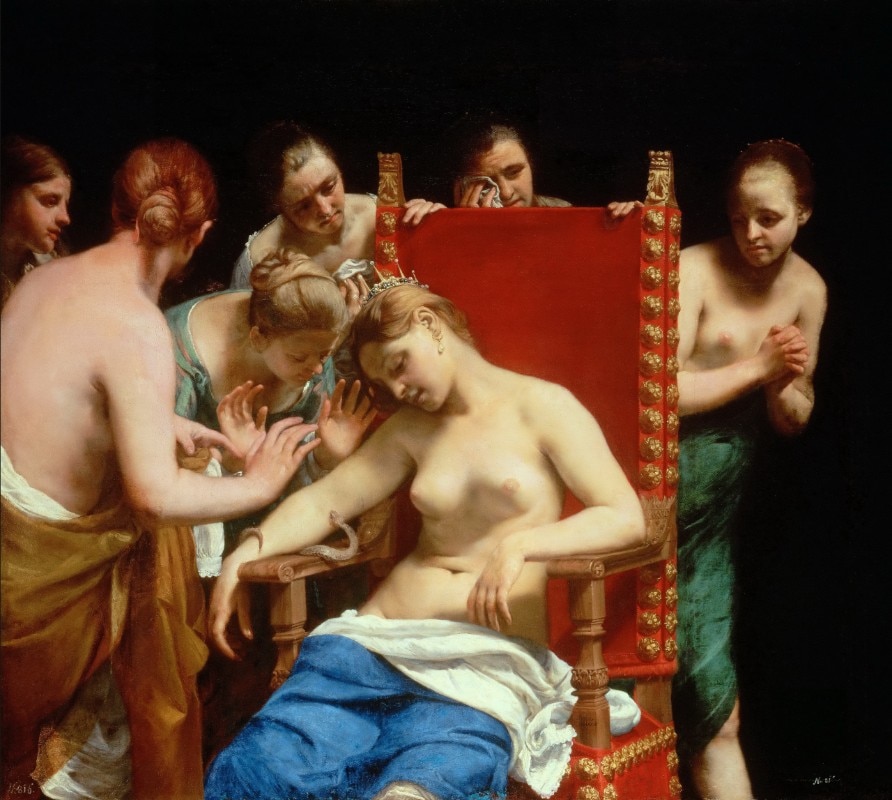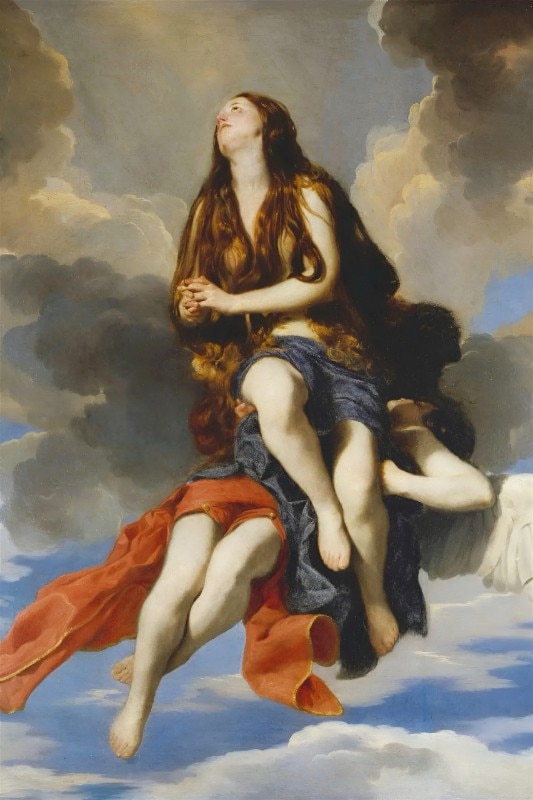Guido Cagnacci was born in Santarcangelo di Romagna – a small town in the province of Rimini on the Via Emilia – on January 19, 1601.
An unconventional master of Baroque art, erotic and sensual, Cagnacci revolutionized the art of the 17th century through a pictorial language that looked to the great masters of his time such as Guido Reni, Guercino, and the Carracci brothers. However, he distorted their sense and style through dense, passionate brushstrokes that touched both religious and more profane subjects.
For the Emilian artist, Mary Magdalene was an extremely fascinating subject. Precisely for this reason, he portrayed her in several works and different versions. One notable depiction is housed at the Alte Pinakothek in Munich, where she is depicted during her assumption into heaven.
The saint is naked, with only a deep blue veil wrapped around her waist. An angel – also covered by a single cloth but in a red hue, supports her during her ascent to heaven. Nothing conforms to the classical sacred representation except for the long hair typical of Mary Magdalene.
The two bodies intertwine, touch, connect, and embrace each other, where the warm colors of the angel envelop the cooler tones of Mary Magdalene. The erotic element is predominant and shapes the entire work.
An unconventional master of Baroque art, erotic and sensual, Cagnacci revolutionized the art of the 17th century.

Moving on to more profane subjects, we find a work of extraordinary fame: The Death of Cleopatra. This subject was explored in multiple versions as well, including one housed in the Pinacoteca di Brera in Milan and another in the Kunsthistorisches Museum in Vienna.
‘The bite of the asp alone induced a sleepy torpor and sinking, where there was no spasm or groan, but a gentle perspiration on the face, while the perceptive faculties were easily relaxed and dimmed, and resisted all attempts to rouse and restore them, as is the case with those who are soundly asleep’ (Plutarch, Life of Antony).
Both works are from 1660, but only the Austrian one is charged with eroticism. A play of hands characterizes the scene, set against a dark background where the naturalism of Caravaggesque painters takes precedence. It is a sensual, tactile, and elegant painting. Cleopatra and some of her handmaidens are portrayed semi-nude, with bare breasts and gathered hair, leaving the neck prominently exposed.
Even in death, Cleopatra maintains her sensuality with a seductive pose. William Shakespeare describes her as one who ‘makes hungry where most she satisfies; for vilest things become themselves in her’ (Antony and Cleopatra, Act II, Scene II).
The focal point of the work is marked by the gaze lines of the women, directed towards the snake still wrapped around the queen’s arm, and the figures themselves, through their hands, form an emotional crown.
Guido Cagnacci succeeded in making feelings, passions, and emotions visible through a painting of mystical ecstasy, eloquence, and eroticism, becoming over time a unique and unreproducible element.
Opening image: Guido Cagnacci, St Mary Magdalene taken to heaven by angels, 1650 ca.

